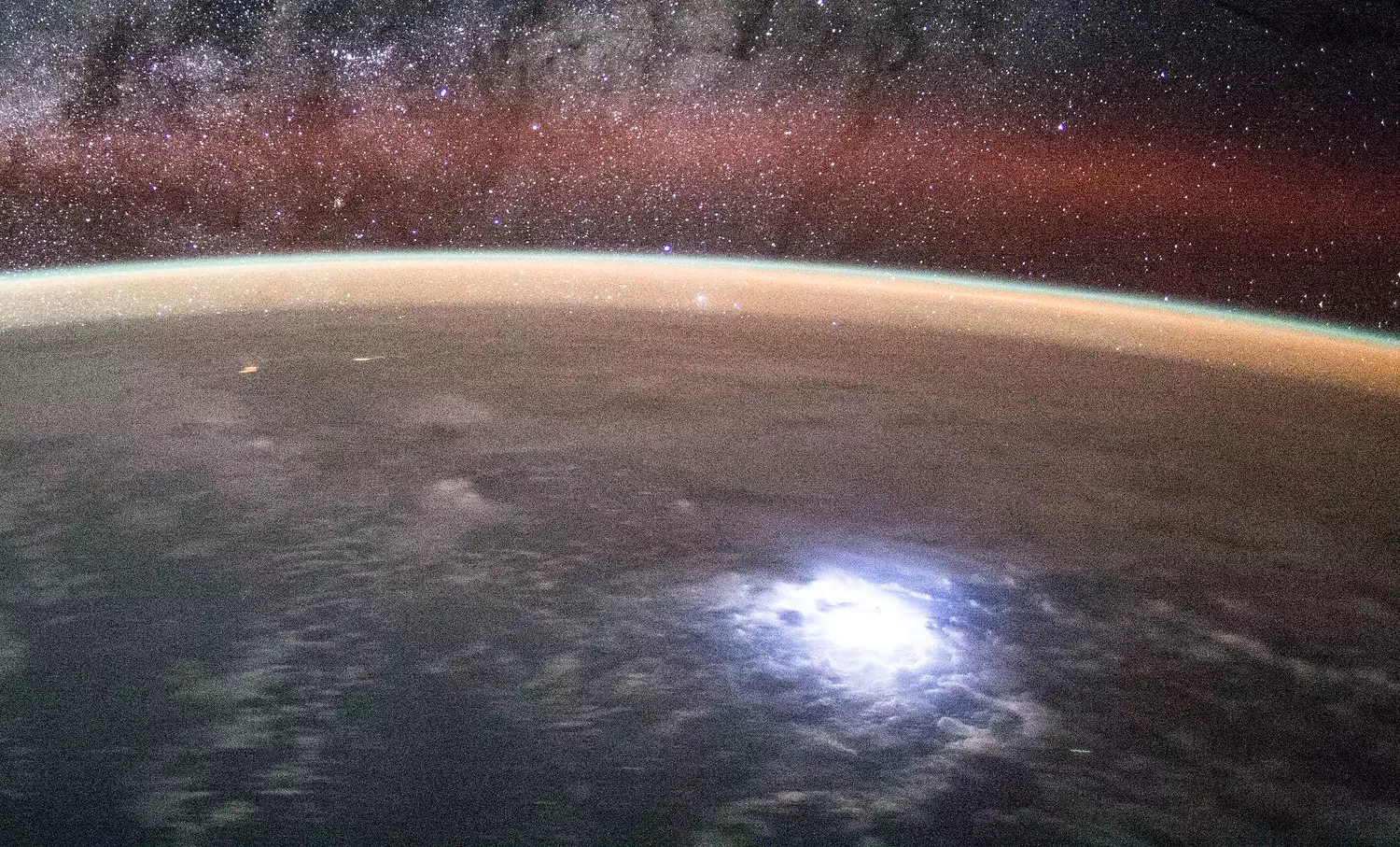[Originally published December 7, 2017 as Lightning: A Natural Nuclear Reactor!]
In 1994, a scientific team using the Compton Gamma Ray Observatory reported seeing intense gamma ray flashes coming from the earth. The researchers called it an “unexplained terrestrial phenomenon,” but they noted:
The apparent correlation of the events with storm systems leads us to hypothesize that they are caused by electrical discharges to the stratosphere or ionosphere.
This generated interest among certain research groups, so ground-based observatories, airborne detectors, and other space-based observatories began looking for the same thing. It is now well-known that lightning is accompanied by the production of high-energy gamma rays.
While these gamma rays are of high enough energy to induce nuclear reactions, until now there has been no conclusive evidence that such reactions are actually occurring in connection with lightning storms. However, thanks in part to a Japanese academic crowdfunding site, we now have strong evidence that lightning does, indeed, produce nuclear reactions in the atmosphere!
The research team that gave us the evidence had begun a project where they were building and placing small gamma-ray detectors along Japan’s western coast, which is apparently ideal for observing strong thunderstorms. However, they ran out of funding, so they used the aforementioned academic crowdfunding site to raise money to continue their work. The extra funding made the difference, and just last month [November 2017], the team published a paper in the journal Nature where they report their results.
They saw three bursts of gamma rays associated with lightning. The first lasted less than a thousandth of a second, and it was consistent with what other studies had already seen: high energy gamma rays coming from the lightning strike itself. However, they observed a second burst that lasted for several hundredths of a second. That gamma ray burst was characteristic of neutrons being absorbed by nitrogen atoms. The final burst lasted for tens of seconds (about a minute) and was characteristic of positrons (anti-matter versions electrons) colliding with electrons. When matter and antimatter collide like that, they annihilate one another and produce gamma rays of a specific energy.
Based on these data, the most likely explanation is that the initial gamma rays produced by the lightning strike knocked neutrons out of nitrogen atoms in the atmosphere. Those neutrons were then absorbed by other nitrogen atoms, which became neutron-rich and produced the second burst of gamma rays. The nitrogen atoms that had initially lost neutrons decayed by emitting a positron. That positron then collided with an electron, producing the third burst of gamma rays.
Now Carbon-14 Comes In
There are many interesting aspects to this study, but I want to focus on just one of them. If the scenario explained above is correct, then carbon-14 is also being produced by lightning. Based on what we already know about such reactions, only about 4% of the neutrons that were initially knocked out of the nitrogen atoms would be reabsorbed by other nitrogen atoms. The other 96% would knock a proton out of other nitrogen atoms, producing carbon-14. Thus, we can now state with some confidence that lightning strikes produce carbon-14!
Why is this interesting? Well, I have been told since I was a university student that radioactive dating systems are generally not affected by what happens on earth, since there just isn’t enough energy in terrestrial events to affect nuclear systems. Thus, the radioactive dating systems that we use to establish the age of fossils and rocks cannot be significantly affected by terrestrial events. We can now say with some confidence that this just isn’t true. Lightning strikes clearly produce enough energy to affect nuclear systems, and based on the data given in this study, it is affecting one that is used for radioactive dating (the carbon-14 system).
In addition, this isn’t the only such revelation that has recently come to light. Earlier in 2017 an innovative scientist realized that a very simple physical process called diffusion can strongly influence certain radioactive dating systems. His model suggests that it could throw off ages given by the popular rubidium-strontium dating method by as much as 29 billion years! So just this year, we have learned about two processes that happen routinely on earth which affect different radioactive dating methods. I predict that over time, more will be discovered.






